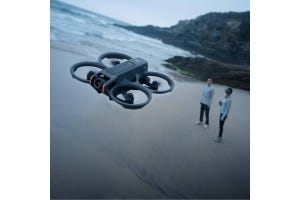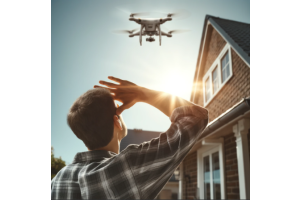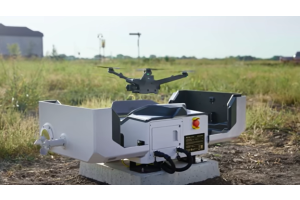Drones are becoming indispensable in SAR operations, offering a unique vantage point and capabilities unattainable by traditional methods. For instance, since 2017, DJI has been instrumental in saving over 1,000 people worldwide. This count includes only cases where the drones were directly involved in locating, aiding, or rescuing individuals in danger – like in Vermont where a two-year-old child was found safe after going missing in August this year. The child was located in the woods following a search operation conducted by the Vermont State Police past 9 p.m. on that fateful Mondy night using a drone with thermal camera.


The primary advantage of unmanned aerial vehicles (UAVs) is their ability to access and survey areas that are challenging or dangerous for human teams especially where every second counts. Equipped with advanced technologies such as thermal imaging, drones can locate individuals in low-visibility conditions or in rugged terrains, which would otherwise be extremely difficult to navigate. This technological leap not only accelerates the rescue process but also cuts operational costs and time involved for public safety agencies tasked with the missions – as happed when a man went missing while tubing on the Rock River in Illinois was found after a two-hour search. The Henry County Sheriff’s Office's drone operator, Deputy Adam Sovanski, spotted him from the air, leading to a successful rescue.
This has seen more agencies adopt the drones in their operations. In fact, by the end of 2023, the worldwide market for search and rescue drones is set to hit $3.25 billion, with fire departments accounting for 20.3% of the revenue share, at a valuation of $660.6 million. It is expected that by 2033, the global market have surpassed $11.65 billion, showing a remarkable 13.6% compound annual growth rate (CAGR) during the coming decade.
Along with this tech evolution comes the need for training and skills required to operate the machines.
3 Things Drone Pilots in Rescue Missions MUST Know
At a fundamental level, the training for search and rescue teams that will be operating drones need to be well versed in:
· Drone Types And Functionalities: This includes learning about flight capabilities and payload capacities, which are crucial in high-stakes environments. For instance, some drones may have longer flight times, enhanced night vision or better stability in adverse weather, making them ideal for extended search missions.


For the payload, this looks at the camera optics, to the drones are used to carry essential equipment, such as medical supplies, communication devices, or even life-saving flotation devices to the person in need.
Also Read: The Best 15 Long-Range Drones For 2023: Our Top Picks
· Navigational Skills for Diverse Terrains: Pilots need to adeptly maneuver drones through anything from dense forests to urban landscapes. Different environmental conditions also come into play. For instance, how do wind patterns affect drone stability can be the difference between success and failure in a rescue operation. This skill is essential for making quick, informed decisions during SAR missions.
· Legal and ethical considerations: Pilots must be well-versed in the legal frameworks governing drone usage, particularly those pertaining to airspace regulations and privacy laws. This knowledge ensures compliance and maintains the integrity of the mission. Ethical training covers sensitive aspects like respecting the privacy of individuals in distress and understanding the humanitarian principles that guide SAR operations. The goal here is to ensure that the drone pilot is a responsible operator aware of the legal and moral implications of their work.
Advanced Strategies for Effective Drone Rescue Operations
The success of the mission also comes down to knowing how to interpret the drone data that you obtain – and make the most out of it. So advanced skills are needed, including:
· Proficiency in Remote Sensing and Imaging Technologies: Your personnel should be up to speed with these technologies. Thermal imaging, for example, allows pilots to detect heat signatures from humans or animals – critical for low-visibility conditions or night missions. Pilots must be adept at interpreting these images accurately using the drone’s integrated software – and collaborate with other stakeholders during the operations through platforms like DJI Flight Hub 2. Additionally, other remote sensing tools such as LIDAR (Light Detection and Ranging) can be used to map and navigate through complex terrains, enabling precise and efficient search operations.
Also Read: The Best 15 Night Vision Drones of 2023
· Scenario-Based Learning: Simulations and Real-World Exercises: This training takes through different emergency scenarios, from natural disasters to missing person searches. It’s designed to hone their decision-making skills, quick thinking, and adaptability in high-pressure situations. Real-world drills complement this by providing hands-on experience under the guidance of qualified instructors. This combination ensures that pilots are well-prepared for the unpredictability and challenges of rescue missions.
Drone Training Classes for Public Safety Applications from DSLRPros
We’re excited to offer a comprehensive program designed to empower SAR personnel with the skills necessary for their missions. This 8-hour session, led by our experienced instructors, blends classroom learning with extensive hands-on flying experience.


Core Training Components
· Starting, Maintaining, and Operating a UAS Program: You receive guidance on how to run a UAS program within an agency or department, with a focus on setting clear goals and mission parameters – right through to managing fleets of drones with solutions like AirData.
· Legal Compliance and Safety: Detailed instruction on current laws and regulations, including Part 107 rules.
Practical Application and Scenario Training
We cover different UAS deployment situations such as structure and brush fires, searches, swift-water rescue, hazardous material handling and more. This approach is enriched by our instructors' extensive experience in tactical missions, for training that is among the most comprehensive in the industry.
Personalized Sessions
Attendees are encouraged to bring their drones and gear for a more tailored learning experience. By the end of the course, participants will be equipped with the knowledge and skills to effectively manage a UAS program and deploy drones in different search and rescue operations.
For more details and to take advantage of our limited-time offers on class bundles, visit our UAS Operations Training Page. Join us and grow your organization's capacity to use drone technology for public safety.





